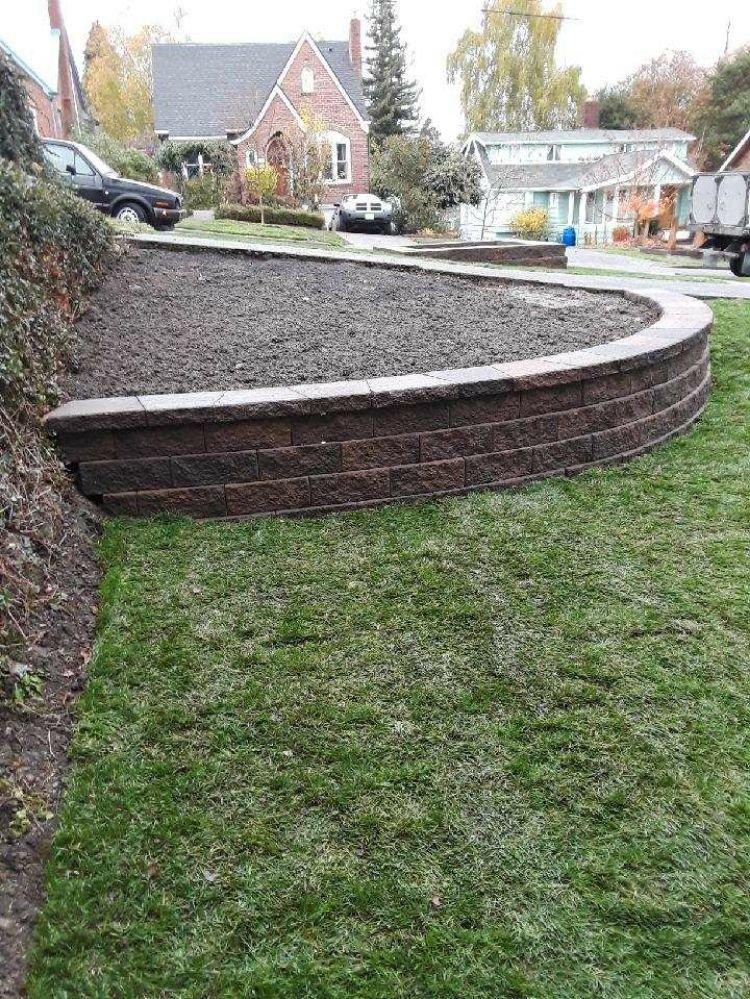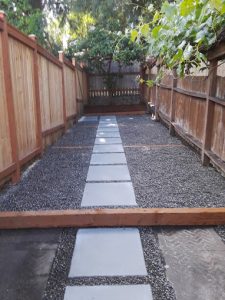Mowing Your Lawn: Tips and Best Practices for a Healthier, Greener Yard
Mowing your lawn is like giving it a regular workout—keeps it strong, healthy, and looking sharp. Whether you’re a seasoned pro or a newcomer to lawn care, this guide will help you understand the best mowing practices, the tools you’ll need, and how to keep your Seattle lawn in tip-top shape.
Why Mow the Lawn?
Mowing your lawn isn’t just about aesthetics—regular mowing helps maintain a healthy lawn. Here’s why it’s essential:
- Promotes Healthy Grass: Regular mowing encourages grass to grow thicker, helping to fill in bare spots and create a denser, lush lawn.
- Prevents Weeds: Mowing helps crowd out weeds by reducing their ability to grow and spread. A well-maintained lawn has less space for weeds to take root.
- Keeps Pests Away: Tall, unkempt grass can harbor pests like ticks, mosquitoes, and rodents. Keeping your grass short reduces the habitat for these unwanted visitors.
What You’ll Need: Tools for the Job
To make mowing easier and more effective, you’ll want the right tools. Here’s what I recommend for Seattle’s often damp, cool climate:
- Lawn Mower: The core tool of your lawn care routine. Whether you use a gas-powered, electric, or battery-operated mower, make sure it’s in good condition. For most Seattle lawns, a push mower or self-propelled mower works great.
- Trimmer/Edger: For those tight corners and edges that the mower can’t reach, like along fences, flower beds, or sidewalks. Battery-powered or gas-powered models are ideal for easy trimming.
- Rake: After mowing, especially in Seattle’s rainy weather, grass clippings can pile up. A rake will help clear them away and prevent clippings from suffocating the grass.
- Leaf Blower (Optional): If you have a lot of leaves or debris, a blower is a quick and efficient way to clean up after mowing.
Seattle’s Grass Types
Seattle’s cool, wet climate is perfect for certain types of grass. The most common varieties you’ll find in Seattle yards include:
- Fine Fescue: A popular choice due to its ability to thrive in shady and moist conditions, making it perfect for the Pacific Northwest. It’s also low-maintenance, which is a bonus for busy homeowners.
- Kentucky Bluegrass: Ideal for sunny areas, Kentucky Bluegrass is resilient and can handle some foot traffic, making it great for lawns with kids and pets.
- Perennial Ryegrass: Fast-growing and tough, this grass type does well in areas that get a mix of sun and shade. It’s a hardy choice for Seattle lawns that need quick cover.
Mowing Seasons in Seattle
Given Seattle’s unique climate, here’s the general mowing schedule for your lawn:
- Spring (March–May): Mow weekly during the spring to help the grass recover after winter. The grass is growing fast during this time.
- Summer (June–August): Mow every 10–14 days. Be mindful of the weather—during hotter, drier periods, you may want to raise your mower blades to avoid cutting the grass too short.
- Fall (September–November): Mow weekly again as the grass continues to grow, especially before winter. This helps maintain healthy roots going into the cold months.
- Winter (December–February): No need to mow in winter. Grass typically goes dormant during this time, and it’s best to let it rest.
Best Mowing Practices
Now that you have your tools and an understanding of when to mow, here are some best practices to keep your lawn in top shape:
- Don’t Mow Wet Grass: Mowing when the grass is wet can cause uneven cuts, clog the mower, and even damage the grass. Wait for a dry day if possible.
- Leave Grass at 2.5-3 Inches: Cutting the grass too short can weaken it and allow weeds to take over. Keeping your grass at this height ensures healthy growth and prevents stress on the roots.
- Change Mowing Pattern: Every few mowings, change your mowing pattern. This prevents the grass from leaning in one direction and helps promote upright growth.
- Keep Blades Sharp: A dull blade tears grass rather than cutting it cleanly, leading to brown edges and potential disease. Sharpen your mower blades regularly for the best results.
Wrapping It Up: Lawn Mowing for a Healthy Yard
Mowing your lawn is a simple but important part of maintaining a healthy, vibrant yard. By following the right practices and using the proper tools, you can keep your grass thick, lush, and free from weeds or pests. Regular mowing also helps your lawn endure Seattle’s unique climate and ensures it remains a beautiful part of your outdoor space.
Summary Notes:
- Tools: Lawn mower, trimmer/edger, rake, leaf blower (optional).
- Seattle Grass Types: Fine Fescue, Kentucky Bluegrass, Perennial Ryegrass.
- Mowing Seasons: Spring (weekly), Summer (every 10-14 days), Fall (weekly), Winter (no mowing).
- Best Practices: Don’t mow wet grass, keep grass at 2.5-3 inches, change your mowing pattern, keep blades sharp.
Happy mowing, and if you need help with your lawn care, you know who to call! Let’s keep your Seattle lawn looking great all year round.
Seattle Lawn Mowing Schedule Recommendations
| Month | Fine Fescue | Kentucky Bluegrass | Perennial Ryegrass |
|---|---|---|---|
| January | No mowing (dormant) | No mowing (dormant) | No mowing (dormant) |
| February | No mowing (dormant) | No mowing (dormant) | No mowing (dormant) |
| March | Mow every 2 weeks | Mow every 2 weeks | Mow every 2 weeks |
| April | Mow weekly | Mow weekly | Mow weekly |
| May | Mow weekly | Mow weekly | Mow weekly |
| June | Mow every 10-14 days | Mow every 7-10 days | Mow every 10-14 days |
| July | Mow every 10-14 days | Mow every 7-10 days | Mow every 10-14 days |
| August | Mow every 10-14 days | Mow every 7-10 days | Mow every 10-14 days |
| September | Mow weekly | Mow weekly | Mow weekly |
| October | Mow weekly | Mow weekly | Mow weekly |
| November | Mow every 2 weeks | Mow |

Best Time to Mow Your Lawn
In Seattle, mowing isn’t an all-year thing (thankfully!). The general rule is to mow when the grass is actively growing. Here’s a breakdown:
- Spring: Grass grows quickly in spring, so you’ll likely need to mow once a week.
- Summer: As things heat up, slow down the mowing a bit—every 10-14 days is fine. Aim for the early morning or late afternoon to avoid the midday heat.
- Fall: You’ll pick up the pace again, mowing once a week as the grass starts growing more rapidly.
- Winter: The grass goes dormant. Sit back, relax, and put the mower away!
Mowing Best Practices
Now that you’ve got your tools and know when to mow, let’s talk about the how to mow.
- Don’t Cut Too Short: You don’t want a buzz cut—leave your grass about 2.5 to 3 inches tall. Cutting it too short stresses the grass and makes it vulnerable to weeds and disease.
- Change Up Your Pattern: Mowing the same direction every time can cause ruts in the soil and make the grass grow in weird directions. Switch up your mowing pattern every time to keep things even.
- Keep Your Blades Sharp: Dull mower blades tear the grass instead of cutting it clean, which can lead to brown, unhealthy-looking lawns. Sharpen those blades at least once a season.
- Leave the Clippings: If you’re mowing regularly, it’s actually good to leave the clippings on the lawn. They’ll decompose and return nutrients to the soil. Just make sure they aren’t clumped together.
- Don’t Mow Wet Grass: This is a tough one in Seattle where we get plenty of rain. But mowing wet grass can damage the lawn, create clumps, and bog down your mower. Wait until the grass dries a bit for a cleaner cut.
- Edge the Lawn Last: Use your trimmer or edger to tidy up the edges after mowing. It gives your yard a crisp, clean look.
Seattle Lawn Challenges
Living in Seattle, we deal with a few extra challenges when it comes to lawn care:
- Moss: All that moisture means moss loves to take over. Regular mowing helps, but you might also need to aerate the soil or use moss-killing products.
- Shade: Many Seattle yards are shaded by trees, which can stunt grass growth. Choose shade-friendly grasses like Fine Fescue and don’t cut the grass too short in these areas.
- Wet Ground: Be cautious about mowing when the soil is too wet, as it can compact the soil and leave ruts.
Wrapping It Up
Lawn mowing might seem like a chore, but once you’ve got the hang of it, it’s a quick and easy way to keep your yard looking fresh and healthy. Remember, it’s all about the right tools, the right timing, and a few best practices. And hey, if you ever need help, you know where to find me—Mr. Lee is always here to lend a hand.
- Wet lawn in Seattle: Wait until the grass dries after a rain before mowing to avoid damage.
- Fine Fescue yard: Mow it regularly at around 3 inches for a thick, healthy lawn.
- Shady lawn: Use a Fine Fescue mix for shaded areas and avoid cutting too short.
- Moss problem: Regular mowing plus aeration can help fight moss in the yard.
- Trimmer/Edger: A tool used to cut grass in areas that the mower can’t reach.
- Moss: A plant that thrives in damp, shady areas and can overtake your lawn if left unchecked.
- Dethatch: Removing the layer of dead grass and debris on the surface of the soil to improve lawn health.



















